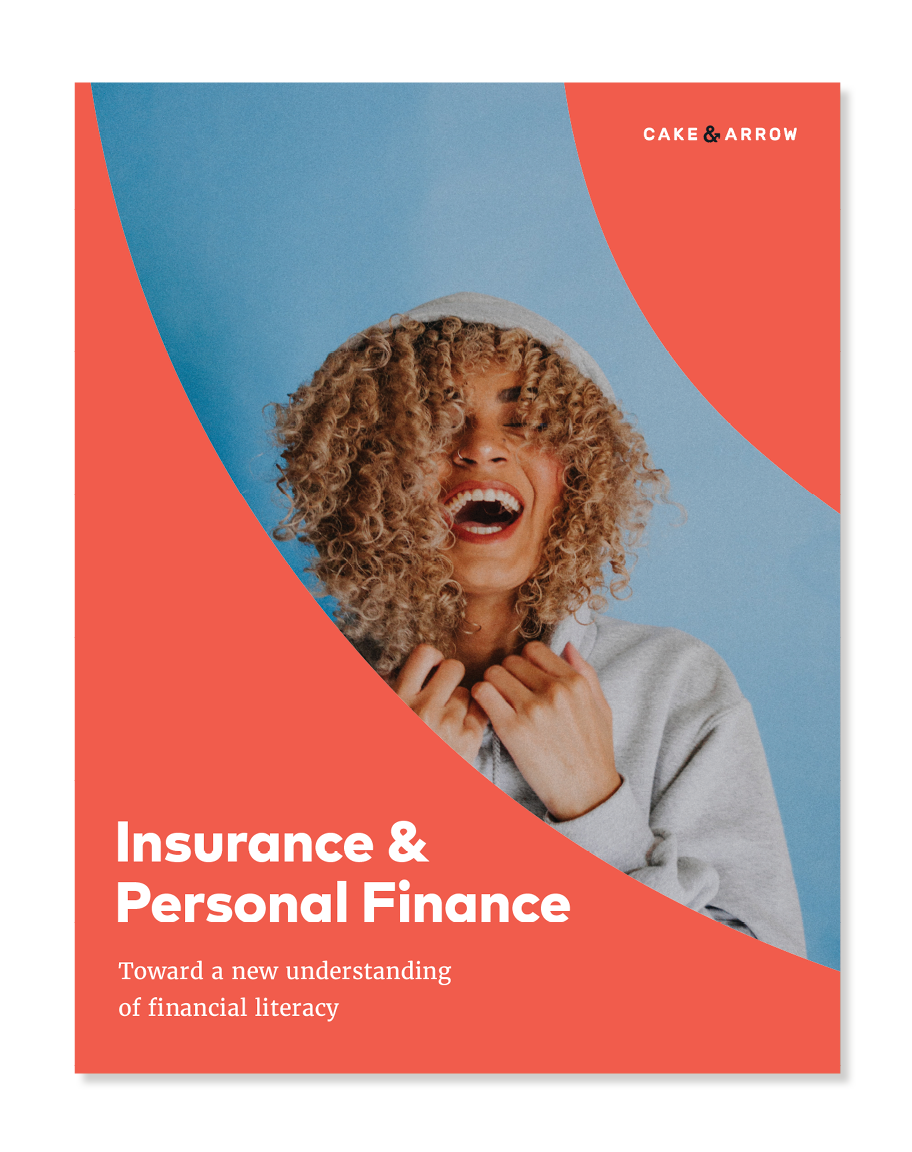
In today’s increasingly complex financial landscape, financial literacy has never been more critical to financial well-being–and more difficult to nail down. Advancing technology, an influx of financial information and advice available via the Internet, and increased economic uncertainty have made financial literacy evermore elusive.
Late last year, we surveyed over 1,000 Americans to understand how ideas of personal finance and financial literacy are changing and what these shifts mean for the insurance industry.
Insurance & Personal Finance: From financial literacy to financial freedom
As new financial pressures and realities converge with an explosion of new financial tools, trends, and instant access to information, how is the way people are thinking about and managing their money evolving – and what does this mean for the insurance industry?

Our research not only found that financial literacy isn’t so much a static state to be achieved, but a continuum along which people find themselves as they gain knowledge and experience while building confidence and working toward their financial goals.
To help us better understand and describe what financial literacy looks like, where people are getting stuck financially, and ultimately help the insurance industry better support their customers on their journeys toward financial freedom, we designed a new model for how financial literacy can be understood within a spectrum of confidence and freedom, surfacing key personas that exist along the continuum:
The continuum of financial literacy

Among the financially literate, Stewards are the least confident and have the least financial freedom. While they have taken the first steps in their financial literacy journeys and are tending to their finances by saving, budgeting, establishing and maintaining credit, and paying their bills on time, their financial experience is limited with few owning property or having significant investments. The majority of our survey respondents fell within this category.
Strategists have established financial habits and are focused on how to make their money do more for them. They are gaining financial experience by doing things like buying homes, property, or high-ticket items and are experimenting with investing, and in doing so, building confidence. As the stakes get higher, they are researching, tapping into personal networks, and seeking out financial professionals or influencers to help them make sound financial decisions.
At the apex of the continuum we find Investors. They are financially experienced, established, confident and have the most financial freedom. They may have bought, owned, and sold more than one home or piece of property, are likely to have significant and diversified investments, and are thinking about the future—doing things like estate planning and determining how to best leverage their assets and investments to support retirement or other lifestyle changes. They are both growth-minded and deeply invested in the future stability of themselves and their families. While very few of those we surveyed fell into this category, those that did were generally more insured and much more likely to see insurance as an important aspect of financial planning and success.
Leading customers on their journeys toward financial freedom
Within the continuum of financial literacy, understanding the positioning of customers holds significant importance for the insurance industry. With Investors exhibiting the highest level of insurance experience and understanding its value, insurers must proactively support customers in the early stages of their financial journeys. As younger generations take longer to gain financial experience and build confidence, more people are finding themselves stuck in the steward stage later in life, unsure of how to progress financially. This is where the opportunity lies for insurers.
By seeing financial literacy as a continuum, the insurance industry can better identify where their customers fall on their journeys toward financial freedom, tailoring their support and services based on their specific needs, and empowering customers to achieve their financial goals and improve their overall financial well-being.
Here are a few strategies for how insurance can become a more integral part of people’s financial lives, support them as they grow from stewards to strategists to investors, and help them build financial literacy and move toward financial freedom.
1. Cultivate disciplined financial stewards
Design tools, templates, and education to promote financial engagement and improve financial discipline.
Consider how you might cultivate financial literacy by creating more opportunities for customers to engage in basic financial activities and support those that already do in being more effective. This allows for opportunities to create relationships with potential customers early on while gaining insight and data into customers’ financial status, ultimately helping to position higher-level products and services to the right people at the right moment.
2. Advise and enable savvy strategists
Lead customers in their financial decision-making, so when it comes time to buy insurance you are top of mind.
Consider how you might empower consumers–with the information they need, in a context that makes sense, at the right moment in time—to make confident and informed financial decisions. Being a source of information when it comes to deciding what car to buy or what neighborhood to purchase a home in will make you the obvious choice when it comes time for them to level up, and purchase the home or the car.
3. Empower forward-thinking investors
Position insurance as an investment strategy — whether through innovative new products or by reframing existing ones.
Consider how you can act more like a financial advisor—positioning your products alongside more widely understood investment tools (i.e. 401ks, etc.), introducing them to unsophisticated investors—leading customers in their financial decision-making and building their financial literacy to ultimately establish insurance products and companies as an integral component of future financial freedom.
Financial literacy is not a fixed destination but a continuous journey. By recognizing where customers fall on the continuum of financial literacy and tailoring support accordingly, the insurance industry can play an integral role in helping customers achieve their financial goals and improve their overall sense of well-being.
Download our report, Insurance & Personal Finance, for more opportunities and tips on how insurance companies can deepen their customer’s financial literacy and help them build toward financial freedom.